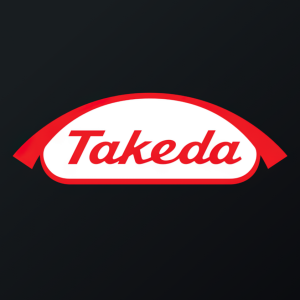Takeda Presents Full Data Set from Phase 3 ADVANCE-CIDP 1 Clinical Trial Investigating HYQVIA® as a Maintenance Therapy for Chronic Inflammatory Demyelinating Polyneuropathy (CIDP) at PNS Annual Meeting
-
Pivotal Phase 3 Findings with HYQVIA [Immune Globulin Infusion
10% (Human) with Recombinant Human Hyaluronidase] Showed a Clinically Significant Reduction in Relapse Rate as well as a Delayed Time to Relapse Compared to Placebo When Used as a Maintenance Therapy in Adult Patients with CIDP - ADVANCE Clinical Program Reflects Takeda’s Commitment to Investigating Immunoglobin (IG) Therapy for Patients with Neuroimmunological Disorders
CIDP is an acquired, immune-mediated condition affecting the peripheral nervous system that is characterized by progressive, symmetric weakness in distal and proximal limbs and impaired sensory function in extremities.1 The role of immunoglobulin (IG) therapy for this rare, debilitating and slowly progressing or relapsing disease has been well-established.2 IG is considered a standard of care for this complex and heterogeneous disease due to its broad immunomodulatory and anti-inflammatory effects. However, the high volume and frequency of treatment required to effectively manage this disease means that treatment can be a burden for patients and their health care providers.
“The results from the ADVANCE-CIDP 1 trial are encouraging for adults with CIDP who require maintenance treatment by offering the potential for a facilitated subcutaneous IG administration option with up to once-monthly dosing (every 2 to 4 weeks),” said Kristina Allikmets, senior vice president and head of Research & Development for Takeda’s Plasma-Derived Therapies Business Unit. “We are committed to expanding our portfolio of differentiated plasma therapies into new indications to further realize the tremendous therapeutic value of immunoglobulins in addressing the needs of patients with neuroimmunological disorders.”
ADVANCE-CIDP 1 is a Phase 3, prospective, randomized, double-blind, multicenter, placebo-controlled study in which adults with stable CIDP on intravenous immunoglobulin (IVIG) were randomized 1:1 to be switched to HYQVIA (n=62) or placebo (n=70) and received their assigned treatment for six months or until relapse or study withdrawal. The primary endpoint was proportion of participants who experienced a relapse defined as worsening of CIDP symptoms as measured by Inflammatory Neuropathy Cause and Treatment (INCAT). Secondary endpoints included patient proportion experiencing functional worsening, time to relapse, change from pre-subcutaneous treatment baseline in Rasch-built Overall Disability Scale (R-ODS) centile score and safety. Key findings showed:
-
HYQVIA showed a clinically significant reduction in relapse rate compared to placebo,
9.7% (95% CI:4.5% ,19.6% ) and31.4% (95% CI:21.8% ,43.0% ), respectively (p = 0.0045). -
HYQVIA showed a lower probability of functional worsening rates versus placebo (
37.5% vs54.4% ) (95% CI −33.02% ,0.69% ). - Patients receiving HYQVIA experienced longer time to relapse compared to those receiving placebo, with the Kaplan–Meier curves separating early, at approximately Week 4.
- Change in R-ODS centile scores were lower in the HYQVIA group than the placebo group (least-squares mean difference [standard error] −6.1 [1.64] vs −0.9 [1.69], respectively).
The safety profile of HYQVIA in the ADVANCE-CIDP 1 trial was generally consistent with the existing EU Summary of Product Characteristics. Infusion characteristics were well-matched between HYQVIA (n = 600 infusions) and placebo (n = 647 infusions) groups, with <
“For patients with CIDP who need immunoglobulin treatment, the ADVANCE-CIDP 1 study results are encouraging,” said Dr. Robert Hadden, Consultant Neurologist, Dept. of Neurology, King’s College Hospital,
The majority (
HYQVIA is currently under regulatory review in the
About the ADVANCE Clinical Program
ADVANCE-CIDP 1 was a Phase 3, multicenter, placebo-controlled, double-blinded study to evaluate the efficacy, safety and tolerability of HYQVIA® [Immune Globulin Infusion
The primary endpoint of the clinical trial was the proportion of subjects who experienced a worsening of functional disability, defined as an increase of ≥1 point relative to the pre-subcutaneous (SC) treatment baseline score in two consecutive adjusted Inflammatory Neuropathy Cause and Treatment (INCAT) disability scores. The primary efficacy analysis compared relapse rates using a continuity-corrected χ2 test conducted at the
Further information about the ADVANCE-CIDP 1 clinical trial is available at ClinicalTrials.gov under study identifier NCT02549170.
About HYQVIA®
HYQVIA® [Immune Globulin Infusion
HyQvia® (Human normal immunoglobulin) 100 mg/ml solution for infusion for subcutaneous use PRESCRIBING INFORMATION
Always refer to the Summary of Product Characteristics (SmPC) and the local prescribing information of your country before prescribing.
Presentation: HyQvia is a dual vial unit consisting of one vial of
Indications: Replacement therapy in adults, children and adolescents (0-18 years) in: primary immunodeficiency syndromes with impaired antibody production; secondary immunodeficiencies (SID) in patients who suffer from severe or recurrent infections, ineffective antimicrobial treatment and either proven specific antibody failure (PSAF) or serum IgG level of 6 g/l). PSAF is a failure to mount at least a 2- fold rise in IgG antibody titre to pneumococcal polysaccharide and polypeptide antigen vaccines.
Dosage and administration: For subcutaneous use only. Replacement therapy should be initiated and monitored under the supervision of a physician experienced in the treatment of immunodeficiency. The product should be brought to room temperature before use. Inspect both vials for discolouration and particulate matter before administration. Do not use heating devices including microwaves. Do not shake or mix the components of the two vials. Suggested infusion site(s) are the middle to upper abdomen and thighs. The two components of the medicinal product must be administered sequentially through the same needle beginning with the recombinant human hyaluronidase followed by IG
Posology: Dose and dosage regimen may need to be individualised for each patient dependent on the response. Dose based on body weight may require adjustment in underweight or overweight patients. Patients naïve to IG therapy: The dose required to achieve a trough level of 6 g/l is approximately 0.4-0.8 g/kg body weight/month. The dosage interval to maintain steady state levels varies from 2-4 weeks. Trough levels should be measured and assessed in conjunction with the incidence of infection. To reduce the rate of infection, it may be necessary to increase the dosage and aim for higher trough levels (>6 g/l). At the initiation of therapy, it is recommended that the treatment intervals for the first infusions be gradually prolonged from a 1-week dose to up to a 3- or 4-week dose. Patients previously treated with IG administered intravenously (IV): For patients switching directly from IV IG, or who have had a previous IV dose of IG that can be referenced, the medicinal product should be administered at the same dose and at the same frequency as their previous IV IG treatment. Patients previously treated with IG administered subcutaneously: For patients currently being administered IG subcutaneously, the initial dose of HyQvia is the same as for subcutaneous treatment but may be adjusted to 3- or 4-week intervals. For patients switching directly from an IG treatment administered subcutaneously, the first infusion of HyQvia should be given one week after the last treatment with the previous IG. Secondary immunodeficiencies: The recommended dose is 0.2-0.4 g/kg every three to four weeks. Trough levels should be measured and assessed in conjunction with the incidence of infection. Dose should be adjusted as necessary to achieve optimal protection against infections, an increase may be necessary in patients with persisting infection; a dose decrease can be considered when the patient remains infection free. Children and adolescents (0-18 years): Follow adult dosage guidance.
Contraindications: Hypersensitivity to any ingredient or human IG especially in patients with antibodies against IgA; systemic hypersensitivity to hyaluronidase or human recombinant hyaluronidase; HyQvia must not be given IV or intramuscularly.
Warnings and precautions: If HyQvia is accidentally administered into a blood vessel, patients could develop shock. The recommended infusion rate given in the SmPC should be adhered to. Infuse slowly and monitor closely throughout the infusion period, particularly patients starting therapy. Patients may require monitoring for up to 1 hour after administration. Manage infusion related events by slowing the infusion rate or stopping the infusion. Treatment will depend on the nature and severity of the adverse event. Patients should be reminded to report chronic inflammation and nodules which occur at the infusion site or other locations. For home treatment, patients should have the support of another responsible person in case of adverse reactions. Record treatment with HyQvia and batch number in patients’ notes.
Hypersensitivity: Hypersensitivity reactions are possible in patients with anti-IgA antibodies who should only be treated with HyQvia if alternative treatments are not possible and under close medical supervision. In case of hypersensitivity, shock or anaphylactic-like reactions, discontinue the infusion immediately and treat the patient for shock. Rarely, human normal IG can induce a fall in blood pressure with anaphylactic reaction. In high-risk patients HyQvia should only be administered where supportive care is available for life threatening reactions. Patients should be informed of the early signs of anaphylaxis/ hypersensitivity. Pre-medication may be used as a preventative measure.
Hypersensitivity to recombinant human hyaluronidase: Any suspicion of allergic or anaphylactic like reactions following recombinant human hyaluronidase administration requires immediate discontinuation of the infusion and standard medical treatment should be administered, if necessary. Immunogenicity of recombinant human hyaluronidase: Development of non-neutralising antibodies to the recombinant human hyaluronidase component has been reported in patients receiving HyQvia in clinical studies.
Thromboembolism: Thromboembolic events including myocardial infarction, stroke, deep venous thrombosis and pulmonary embolism have been observed with IG treatment and cannot be excluded with use of HyQvia. Ensure adequate hydration prior to treatment. Monitor for signs and symptoms of thrombosis and assess blood viscosity in patients at risk. Patients should be informed about initial symptoms and advised to contact their physician immediately upon onset.
Haemolytic anaemia: IG products contain antibodies to blood groups (e.g. A, B, D) which may act as haemolysins. Monitor for signs and symptoms of haemolysis.
Acute renal failure: Severe renal adverse reactions have been reported in patients receiving IV IG.
Aseptic meningitis syndrome: has been reported, symptoms usually begin within several hours to 2 days following treatment. Patients should be informed about initial symptoms. Discontinuation of IG treatment may result in remission within several days without sequelae.
Transmissible agents: Infectious diseases due to the transmission of infective agents cannot be totally excluded.
Sodium content: The recombinant human hyaluronidase component contains 4.03 mg sodium/mL. To be taken into consideration by patients on a controlled sodium diet.
Traceability: The name and the batch number of the administered product should be clearly recorded.
Interactions: Live attenuated virus vaccines – postpone vaccination for 3 months after treatment with HyQvia. For measles vaccine, impairment may persist for up to 1 year, so check antibody status. Please see the SmPC for details.
Fertility, pregnancy and lactation: Safety during pregnancy has not been established and immunoglobulins are excreted into the milk, therefore use with caution in pregnant and breastfeeding mothers.
Effects on ability to drive and use machines: HyQvia has no or negligible influence on the ability to drive and use machines, e.g. dizziness. Please see the SmPC for details.
Undesirable effects: Very common (≥1/10 patients): Feeling hot, infusion site paraesthesia, infusion site pain (including discomfort, tenderness, groin pain).
Common (≥1/100, < 1/10 patients): Vomiting, nausea, abdominal pain (including abdominal upper and lower pain and tenderness), diarrhoea, infusion site erythema, infusion site swelling (including local swelling and oedema), infusion site pruritus (including vulvovaginal pruritus), pyrexia, asthenic conditions (including asthenia, fatigue, lethargy, malaise), myalgia, musculoskeletal chest pain, headache.
Other serious undesirable effects (rare or unknown frequency): Direct Coombs’ test positive, meningitis aseptic. Refer to the SmPC for details on full side effect and interactions.
Marketing Authorisation (MA) numbers: 2.5g EU/1/13/840/001, 5g EU/1/13/840/002, 10g EU/1/13/840/003, 20g EU/1/13/840/004, 30g EU/1/13/840/005.Name and address of MA holder: Baxalta Innovations GmbH, Industriestrasse 67, A-1221
PI approval code: pi-02539
Date of preparation: June 2023.
Further information is available on request.
Adverse events should be reported to the authorities in your country as required by local law. Adverse events should also be reported to Takeda at: GPSE@takeda.com
This medicinal product is subject to additional monitoring. This will allow quick identification of new safety information. Healthcare professionals are asked to report any suspected adverse reactions. See section 4.8. of the SmPc for how to report adverse reactions.
For Full
About Takeda
Takeda is focused on creating better health for people and a brighter future for the world. We aim to discover and deliver life-transforming treatments in our core therapeutic and business areas, including gastrointestinal and inflammation, rare diseases, plasma-derived therapies, oncology, neuroscience and vaccines. Together with our partners, we aim to improve the patient experience and advance a new frontier of treatment options through our dynamic and diverse pipeline. As a leading values-based, R&D-driven biopharmaceutical company headquartered in
Important Notice
For the purposes of this notice, “press release” means this document, any oral presentation, any question and answer session and any written or oral material discussed or distributed by Takeda Pharmaceutical Company Limited (“Takeda”) regarding this release. This press release (including any oral briefing and any question-and-answer in connection with it) is not intended to, and does not constitute, represent or form part of any offer, invitation or solicitation of any offer to purchase, otherwise acquire, subscribe for, exchange, sell or otherwise dispose of, any securities or the solicitation of any vote or approval in any jurisdiction. No shares or other securities are being offered to the public by means of this press release. No offering of securities shall be made in
The companies in which Takeda directly and indirectly owns investments are separate entities. In this press release, “Takeda” is sometimes used for convenience where references are made to Takeda and its subsidiaries in general. Likewise, the words “we,” “us” and “our” are also used to refer to subsidiaries in general or to those who work for them. These expressions are also used where no useful purpose is served by identifying the particular company or companies.
Forward-Looking Statements
This press release and any materials distributed in connection with this press release may contain forward-looking statements, beliefs or opinions regarding Takeda’s future business, future position and results of operations, including estimates, forecasts, targets and plans for Takeda. Without limitation, forward-looking statements often include words such as “targets,” “plans,” “believes,” “hopes,” “continues,” “expects,” “aims,” “intends,” “ensures,” “will,” “may,” “should,” “would,” “could,” “anticipates,” “estimates,” “projects” or similar expressions or the negative thereof. These forward-looking statements are based on assumptions about many important factors, including the following, which could cause actual results to differ materially from those expressed or implied by the forward-looking statements: the economic circumstances surrounding Takeda’s global business, including general economic conditions in
Medical Information
This press release contains information about products that may not be available in all countries, or may be available under different trademarks, for different indications, in different dosages, or in different strengths. Nothing contained herein should be considered a solicitation, promotion or advertisement for any prescription drugs including the ones under development.
___________________________
1 Dalakas MC. Nat Rev Neurol. 2011;7(9):507–17.
2 Eftimov F, et al. Cochrane Database Syst Rev. 2013;12:CD001797.
View source version on businesswire.com: https://www.businesswire.com/news/home/20230620655714/en/
Media:
International Media
Lauren Padovan
Lauren.padovan@takeda.com
+1 (617) 431-8028
Courtney Winger
Courtney.winger@takeda.com
+1 (617) 301-0687
Source: Takeda Pharmaceutical Company Limited








